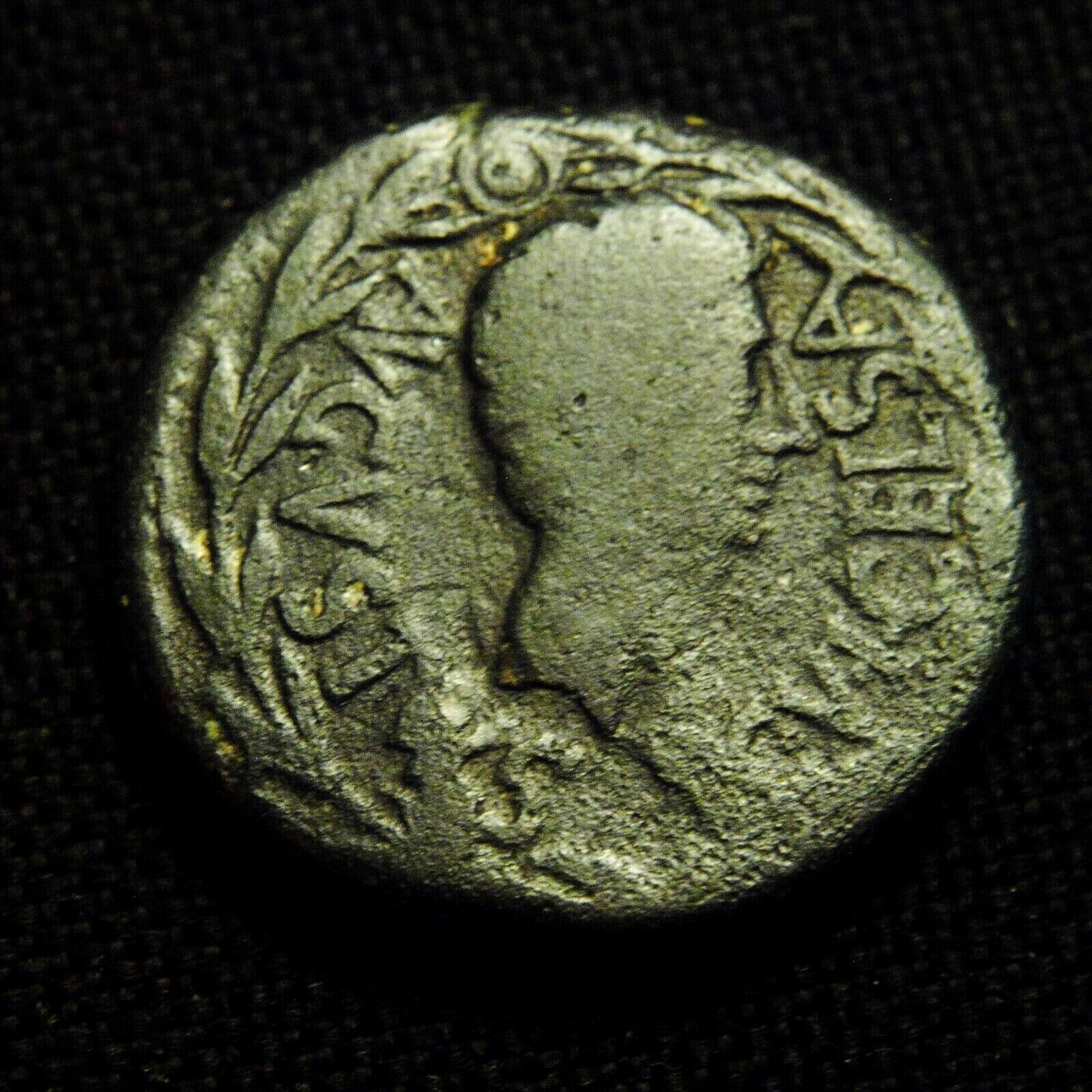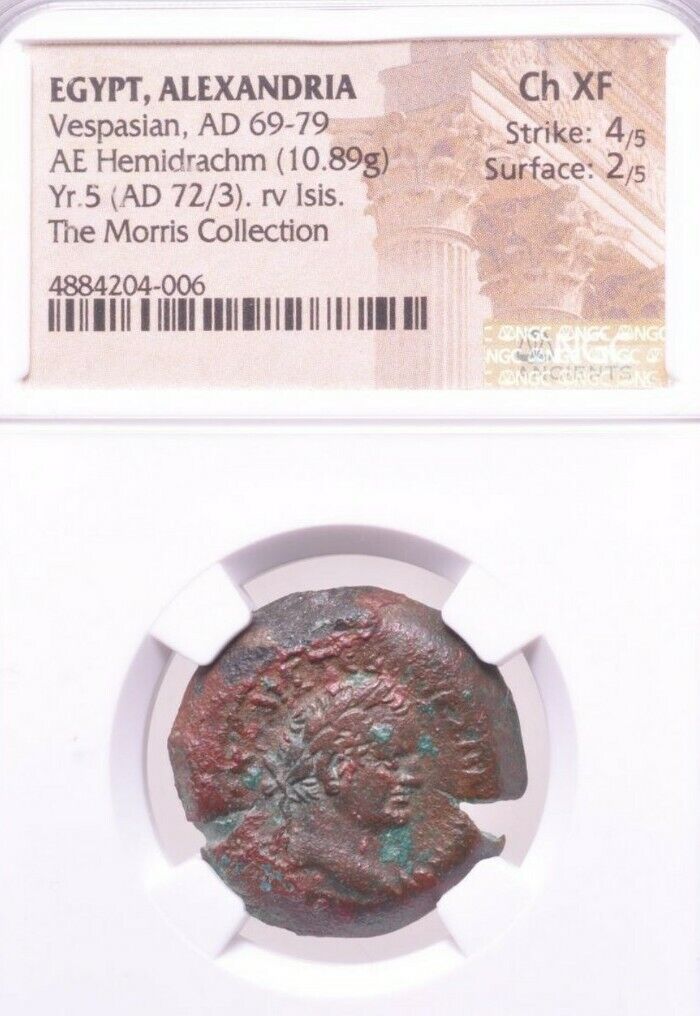-40%
PHILIP I THE ARAB SILVER TETRADRACHM______Antioch, _________EAGLE STANDING
$ 24.28
- Description
- Size Guide
Description
20D28FRASCATIUS ANCIENTS
A BEAUTIFUL ROMAN PROVINCIAL SILVER TETRADRACHM OF PHILIP I THE ARAB (MARCUS JULIUS PHILIPPUS) MINTED IN ANTIOCH SYRIA FROM 244 - 249 AD.
THE SIZE IS 26.5 MM AND 12.04 GRAMS.
Prieur 445
OBVERSE – Laureate, draped and cuirassed bust right
REVERSE – Eagle standing to front, wreath in beak
PHILIP I THE ARAB
A member of a distinguished equestrian family of Arab descent, Philip was praetorian prefect when the emperor Gordian III was killed in a mutiny (perhaps with Philip’s connivance). Philip became emperor and quickly concluded a peace ending a war with Persia. After undertaking a series of campaigns against the Goths and other tribes on the Danube, he returned to Rome in 248 to celebrate the 1,000th anniversary of the founding of the city.
Philip’s reign saw the true beginning of the crisis of the 3rd century, which was marked by a series of barbarian invasions across the Danube and internal civil war led by dissident generals. The initial success of Decius, sent by Philip to face the Goth invasion of 248, led Decius’s army to proclaim him emperor. In 249 their armies met near Verona, where Philip was defeated and slain.
Philip was an excellent administrator who had risen through the ranks from the equestrian order to become ruler in a time that required not administrative skills but military competence..
IMPERIAL ROME
Imperial Rome was the post-Republican period of the ancient Roman civilization, characterized by an autocratic form of government and large territorial holdings around the Mediterranean in Europe, Africa, and Asia. The 500-year-old Roman Republic, which preceded it, had been destabilized through a series of civil wars. Several events marked the transition from Republic to Empire, including Julius Caesar's appointment as perpetual dictator (44 BC); the Battle of Actium; and the granting of the honorific Augustus to Octavian by the Roman Senate .
The first two centuries of the Empire were a period of unprecedented stability and prosperity known as the Pax Romana ("Roman Peace"). It reached its greatest expanse during the reign of Trajan. In the 3rd century, the Empire underwent a crisis that threatened its existence, but was reunified and stabilized under the emperors Aurelian and Diocletian. Christians rose to power in the 4th century, during which time a system of dual rule was developed in the Latin West and Greek East. After the collapse of central government in the West in the 5th century, the eastern half continued as what would later be known as the Byzantine Empire.
Because of the Empire's vast extent and long endurance, the institutions and culture of Rome had a profound and lasting influence on the development of language, religion, architecture, philosophy, law, and forms of government in the territory it governed, particularly Europe, and by means of European expansionism throughout the modern world.
>
ANTIOCH
When the Romans defeated the weakened Seleucids in 64 BC, they annexed Antioch and made it the capital of the province of Syria. While it behooved those who wished to gain positions of power in the Roman administration to learn Latin, Greek remained the primary language of the city.
Hellenistic culture remained intact; the Romans just added to the city's beauty and comfort, lining the main street with colonnades, building temples to Roman gods, paving the gravel roads, and constructing aqueducts. Later, as the Roman Empire became a Christian one, several magnificent churches were built.
Ranking with Rome, Alexandria, and Constantinople as one of the four great cities of the Roman Empire, Antioch's location on one of the most important trade routes between the East and the Greco-Roman world brought it prosperity and a sophisticated culture.
A True Auction Environment –
Auctions start at $.99 with No Minimums and No Reserves.
FULL UNCONDITIONAL GUARANTEE OF AUTHENTICITY
If the buyer feels that the coin received is not as represented - just return the coin and the buyer will be fully reimbursed for the cost of the coin; the original shipping charge; and the cost to ship the coin back… No Questions Asked. If the buyer is not happy, please let me know, and I will do what I can to make it right.
NOTE: Frascatius is a life member (LM #6864) of the American Numismatic Association (ANA). Frascatius fully complies with the ANA Member Code of Ethics.
If you have any questions regarding this auction, please click on “Ask seller a question”.
I will be more than happy to provide you with a response.
Visit My eBay Store: Frascatius Ancient Coins
For those new to ancient coins, please contact me, and I will e-mail to you my "Beginners Guide for Ancient Coin Collectors - FAQ" .
SHIPPING:
To the U.S. = .00 Insured Flat Rate
International = .50 Insured Flat Rate
Multiple items may be grouped at no additional charge at the above rates.
All items will be carefully packaged, protected & insured (private insurance).
Powered by SixBit's eCommerce Solution











